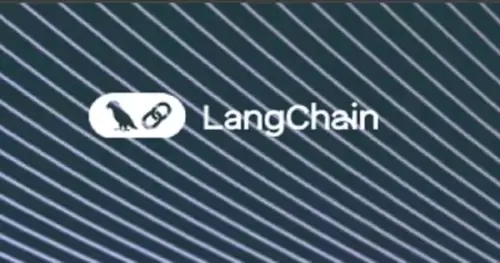 |
|
 |
|
 |
|
 |
|
 |
|
 |
|
 |
|
 |
|
 |
|
 |
|
 |
|
 |
|
 |
|
 |
|
 |
|
加密货币新闻
Restaking: The Narrative Has Moved Fast — from Side Conversations to the Forefront of DeFi Infrastructure
2025/05/01 17:05
The narrative around liquid staking has advanced rapidly. It began with casual conversations among validators and has quickly progressed to become a major topic in Decentralized Finance (DeFi) infrastructure discussions.
According to DefiLlama, major liquid staking protocols now boast over $12 billion in total value locked (TVL), with numerous middleware services aligning their security with Ethereum’s economic base layer.
What started as an idea to enhance capital efficiency for validators has become a significant attempt to reimagine how security is provisioned within decentralized systems.
While liquid staking is quickly gaining traction among crypto participants, institutions, particularly those with multi-year investment horizons and regulatory constraints, still maintain a distance from DeFi.
This isn't due to a lack of interest in the opportunities presented by crypto. Rather, institutions are carefully evaluating the level and type of risk involved in their investments.
Institutions are used to having clear categories for risk, and they have sophisticated models for managing it within each class. In contrast, many DeFi protocols are still in the early stages of development, and their risk profiles are not yet fully understood.
This lack of familiarity with new risk classes and the technical complexity of DeFi protocols can make it difficult for institutions to invest in the space in large quantities. They may also be concerned about the potential for regulatory changes to impact their investments.
However, liquid staking has the potential to change this dynamic and open up new avenues for collaboration between crypto and institutions.
Adding friction where it’s needed most
Most protocols today are focused on reducing risk. But in a composable system like DeFi, we may actually want more friction—at least in the areas where it’s needed most.
For example, consider how new protocols are bootstrapped. They typically require a large initial validator set to process transactions and maintain state. But to attract validators, new protocols must offer excellent terms, which can siphon off operators from existing services. This can destabilize services like oracles, bridges, and data availability layers that are already rendering critical functions for yield optimization.
Now, imagine a scenario where validators can opt into securing new protocols using already-staked assets. This creates a second validation layer that strengthens middleware without bootstrapping entirely new trust networks. It also introduces a second point of slashing, which is absorbed by the service operators.
Unlike traditional validator sets, which are limited in number and compete for capital, this approach aligns existing economic incentives with broader infrastructure needs. Protocols can share security in a composable manner, with slashing conditions, operator sets, and risk parameters customized for each service.
For institutions, this is significant as it signals the beginning of a modular security stack, where exposure can be configured and audited per protocol. It's also interesting that slashing becomes a class of risk—not a red flag.
Slashing is the main blocker for institutional staking
One of the main topics that come up when discussing how to get institutions more involved in crypto is slashing. It's a critical factor for any large-scale capital deployment, especially in the new markets that institutions are exploring.
In simple terms, slashing occurs when a validator commits an offense, such as downtime or malicious activity, and a portion of their staked tokens is slashed as punishment. This is a technical risk that can be covered with service-level agreements (SLAs) and advanced monitoring systems.
However, slashing in liquid staking is segmented. On all major platforms today—from Ankr and Blocknative to Staked and CoinsTag—operators select which services they wish to secure. This allocates slashing to the context of misbehavior, not the entire validator lifecycle.
It’s a crucial distinction. It means slashing is scoped to the service a validator is rendering, be it a stablecoin protocol, a rollup, or a cross-chain bridge.
This is how liquid staking aligns with broader DeFi needs. Instead of new protocols having to "bootstrap" security, they can compose it from existing building blocks.
Institutions may not invest in a new protocol's governance token but will gladly provide liquidity to an overseer, whose role is to attest to the protocol's state. But they’ll only do so if the slashing conditions are defined, and the service operators have the technical capacity to maintain uptime.
After all, institutions are used to having diverse risk classes—credit, equity, commodities, and more. They'll approach slashing as a new class of risk.
Institutions are comfortable with quantifiable risk. They model it in multi-year timeframes and have internal processes for mitigation.
But in nascent DeFi, slashing is often discussed as an all-or-nothing factor. It's a single point of failure in an otherwise composable system.
It stalls capital flows
As we enter a new bull cycle, there's a lot of discussion about capital efficiency. But we can take it a step further.
DeFi is known for its volatility. We have price swings, gas spikes, and liquidation cascades, all of which factor into
免责声明:info@kdj.com
所提供的信息并非交易建议。根据本文提供的信息进行的任何投资,kdj.com不承担任何责任。加密货币具有高波动性,强烈建议您深入研究后,谨慎投资!
如您认为本网站上使用的内容侵犯了您的版权,请立即联系我们(info@kdj.com),我们将及时删除。
-

-

- 比特币,加密货币,赌博网站:2025年最热门的趋势以及在哪里下注
- 2025-08-02 01:40:38
- 潜入比特币和加密赌博网站的世界。发现顶级平台,趋势和见解,塑造了2025年在线博彩的未来。
-

- ftx令牌的野外骑行:ftt下降到债权人还款嗡嗡声中
- 2025-08-02 00:05:56
- 在FTX的还款计划驱动的激增之后,FTT将盈利付费。支持持有,还是有更多的缺点?让我们分解。
-

- 导航加密市场:比特币,交易者体验并避免噪音
- 2025-08-02 00:05:14
- 解码加密市场:比特币的影响力,交易者见解以及如何避免社交媒体陷阱以进行智能投资。
-

- 深度代理,AI任务管理和进化AI:一个新时代?
- 2025-08-02 00:04:55
- 潜入深层代理商的世界,并发现他们如何使用Claude Code和Manus等工具彻底改变AI任务管理。
-

- 压力下的AAVE价格:技术指标指向看跌势头
- 2025-08-02 00:04:41
- Aave Price面临看跌的逆风,尽管技术指标的领导才能进一步信号。反弹是否可能,还是支持水平破裂?
-

-

- 模因硬币,特朗普刺激和投资:纽约的心态
- 2025-08-02 00:00:57
- 分析特朗普刺激对模因硬币和投资策略的潜在影响,重点是Little Pepe(Lilpepe)和更广泛的加密市场。
-




























































